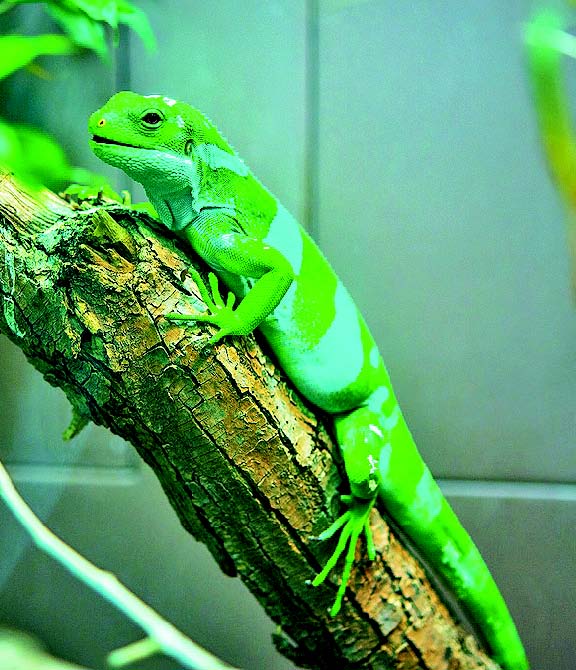The sailfin lizard (Hydrosaurus pustulatus) is one species common among most Philippine islands, except Palawan. The largest of the Agamidae family, this lizard is hard to miss because they’re almost a meter long, with a long crest of toothlike scales from the nape of their neck down the back.
Can this lizard walk on water?
They have distinct, mottled greenish-gray scales covering the body and large flattened toes that aid in swimming. Lighter juveniles can even run across the surface of water, pushing down against its surface tension as if they’re capable of walking on water.
Built for land and water
The sailfin is at home both on land and in the water, and is usually found up in trees or swimming, as they are quite the agile swimmer.
Aside from the long crest along the back, the adult males of the species also have a secondary sail of skin at the base of their tails, which measures up to 8 cm high. It helps them propel themselves through the water, though there are speculations that it also plays a role in regulating body temperature and in territorial displays.

Buried treasure
Females breed only once a year but can lay several clutches of eggs in a season. These clutches contain two to eight eggs, which the females bury in shallow holes close to water.
In around two months, the eggs hatch. Newly hatched sailfin lizards are precocious and are mobile as soon as they emerge from their shells. They can immediately take to the water — a handy skill in avoiding their natural predators: waterbirds, snakes, and fish.
Who’s who?
The Philippine sailfin lizard has other names. Website arkive.org notes several monickers: sail-fin lizard, crested lizard, Philippine sailfin water dragon, sailfin water lizard, and Soa-Soa water lizard.
The issue goes beyond mere names as well. The website notes that there are several other Hydrosaurus species, and the taxonomic status and relationships within and between them remain highly debated and require clarification.
Vulnerable lizard
Not much is known about the sailfin and observing them in the wild has become more difficult with their Vulnerable status in the International Union for Conservation of Nature (IUCN) Red List of Threatened Species. The reasons for this status are the usual for most endangered species: habitat loss and destruction and hunting for the pet trade.
According to sailfindragon.com (an old website last copyrighted in 2005), the sailfin was exported for trade from the Philippines until 1994 when trade to the US was stopped. Soon after, it became illegal to export them to the rest of the world. Thus, any sailfins that make it to the international market these days are likely Indonesian varieties.
There are conservation efforts, of course. Arkive.org notes that Chester Zoo in Cheshire, England has a captive breeding program. There are also three local rescue and breeding centers in Negros and Panay to help establish local breeding, research, and education projects.
This appeared in Animal Scene magazine’s May 2019 issue.






